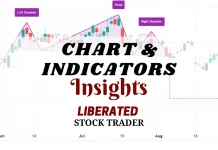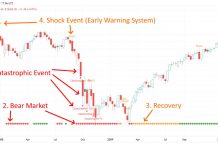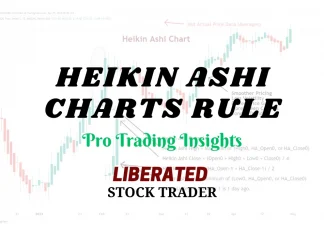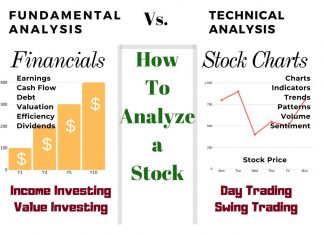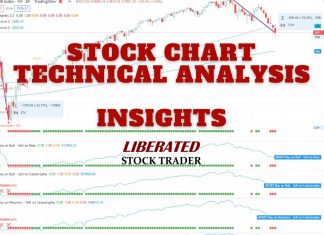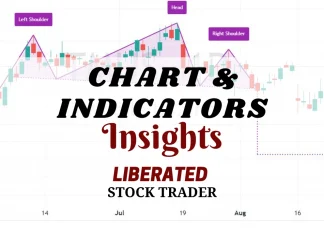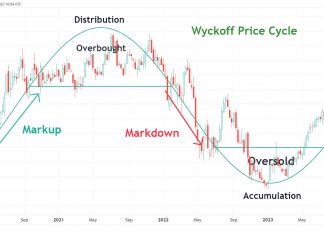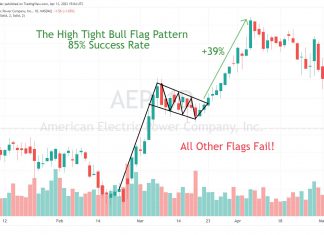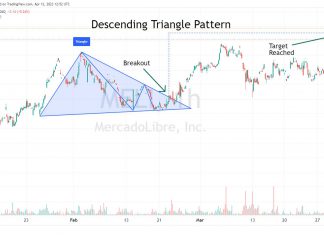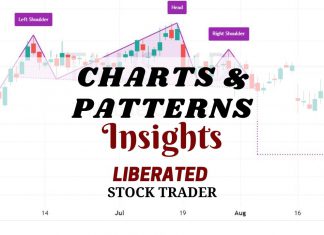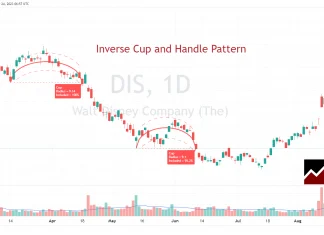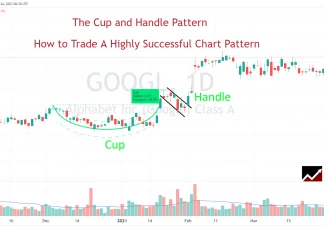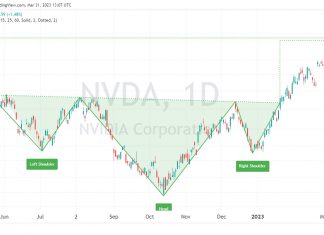Money Flow Index Indicator Best Settings & Reliability Tested
The Money Flow Index (14), on a daily chart, outperformed the S&P 500 stocks over 26 years. Its total return was 1,690%, compared to a buy-and-hold strategy profit of 881%.
Our Data Proves Why Heikin-Ashi Charts Are Best for Traders
I backtested 360 years of data on the 30 most important US stocks, and our findings prove that Heikin-Ashi chart strategies outperform 66% of equities vs. a buy-and-hold strategy.
How To Analyze Stocks with Fundamental & Technical Analysis
There are two ways to analyze stocks. Fundamental analysis, which evaluates criteria such as PE ratio, earnings, and cash flow. Technical analysis, which involves studying charts, stock prices, volume, and indicators.
Linear vs. Logarithmic Charts Explained for Traders
Linear chart scales plot data at regular intervals, making it simple to see changes in data that have small fluctuations. Logarithmic chart scales represent percentage moves.
How to Identify, Avoid & Trade a Dead Cat Bounce
A dead cat bounce is a short-term asset price recovery after a significant volatile decline, followed by a continuation of the downtrend. Look for a short-lived rally that loses momentum quickly, often trapping bullish traders.
The Best Price Action Trading Indicators, Patterns & Tools
Price action trading is a method of day trading that relies on technical analysis but ignores conventional fundamental indicators, focusing instead on the movement of prices.
How to Draw Trendlines on Stock Charts Like a Boss
Drawing trendlines on stock charts is a powerful way to assess the direction of the market. Trendlines help you understand the trend direction and timeframe to set expectations for future market moves.
5 Steps to Choose the Best Technical Analysis Course
When selecting a technical analysis course, consider your preference for industry certification, certified instructors, or both. Also, think about the course duration and depth of content that best suits your needs. Lastly, check the training provider's returns policy for peace of mind.
9 Best Stock Chart Types For Traders & Investors Explained
Our research shows the most effective chart types for traders are Heikin Ashi, Candlestick, OHLC, Raindrop, and Renko charts. These charts provide the best balance of price and trend reversal information to help investors build effective trading strategies.
Wyckoff Method Explained: Accumulation & Distribution Trading
The Wyckoff Method is built upon three cardinal laws that govern the financial markets: the Law of Supply and Demand, the Law of Cause and Effect, and the Law of Effort versus Result.
55% Of Bull Flags Fail. Trade a High Tight Flag’s 85%...
According to an analysis of 1,028 trades, most bull flags have a failure rate of 55%. The high-tight bull flag has a success rate of 85% and is the only flag pattern you should trade.
How to Trade a Descending Triangle’s 87% Success Rate
Twenty years of trading research show the descending triangle pattern has an 87% success rate in bull markets and an average profit potential of +38%.
Why Traders Should Avoid a Bear Flag Pattern Based On Data!
Be careful when trading bearish flags. According to published research, the bear flag pattern has a low success rate of 45%. This means you are flipping a coin when trading this pattern, as the odds are not in your favor. The high-tight bear flag is the only flag pattern you should trade.
How to Short-Sell an Inverse Cup and Handle’s 82% Reliability
Two decades of trading research indicate that the inverse cup and handle pattern has an 82% success rate and average price drops of 17%. It is an ideal pattern for short-selling.
8 Bearish Chart Patterns for Traders Tested & Proven Reliable
Decades of research have proven the most predictable bearish chart patterns are the inverted cup-and-handle, with an average price decrease of 17%, the rectangle top (-16%), head-and-shoulders (-16%), and the descending triangle (-15%).
How to Trade a Cup and Handle’s 95% Reliability & 54%...
Twenty years of trading research show that the cup and handle pattern has a 95% success rate in bull markets and returns an average profit of +54%.
How to Trade the Inverse Head & Shoulders with 89% Accuracy
The inverse head and shoulders pattern is one of the most accurate technical analysis reversal patterns, with a reliability of 89%. It occurs when the price hits new lows on three separate occasions, with two lows forming the shoulders and the central trough forming the head.
Top 10 Best Bullish Patterns Tested & Proven Reliable
Research shows the most reliable and accurate bullish patterns are the Cup and Handle, with a 95% bullish success rate, Head & Shoulders (89%), Double Bottom (88%), and Triple Bottom (87%). The most profitable chart pattern is the Bullish Rectangle Top, with a 51% average profit.
How to Trade Market Profile Charts & Best Software To Use
A market profile chart is a day-trading tool that displays the price activity to identify a time price opportunity (TPO). It helps traders identify the most traded prices and develop strategies to exploit these areas.
Avoid Equivolume & Use These 6 Proven Charts
Equivolume charts have lost their popularity over time due to poor performance in testing and weak data visualization. I demonstrate why equivolume is no longer in use and introduce six charts proven superior by data.













